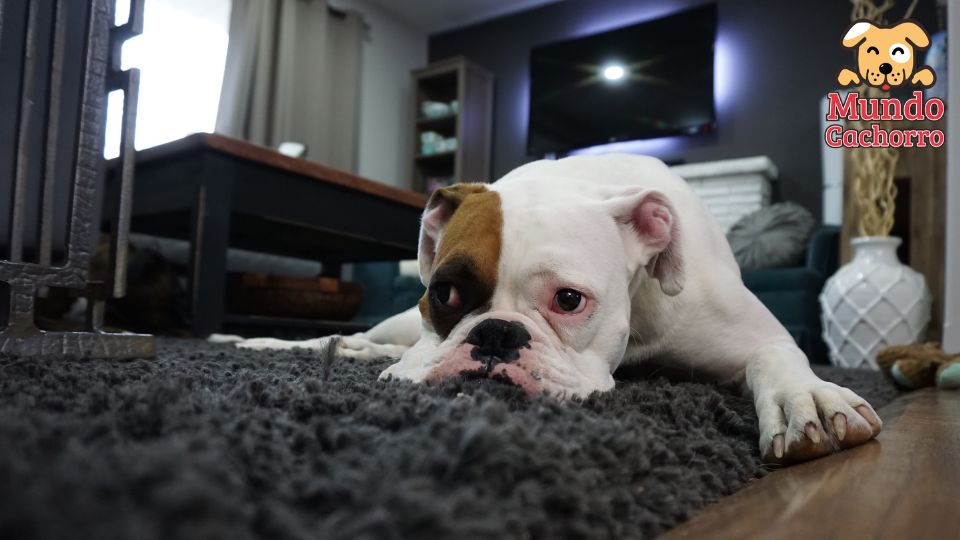Separation anxiety is a behavioral disorder that affects many dogs and manifests itself when the animal is left alone or separated from its owners. This problem can be extremely distressing for both the dog and its owners, as it not only impacts the animal’s quality of life, but can also lead to destructive and unmanageable behaviors in the home. Understanding what it means for a dog to suffer from separation anxiety is crucial to identifying the symptoms, addressing the problem effectively and ensuring the pet’s well-being.
Indice
Identifying separation anxiety
Separation anxiety in dogs is characterized by a state of distress experienced by the animal when left alone. Dogs are social animals by nature and, in many cases, develop a strong attachment to their owners. When this attachment becomes overly dependent, the dog may feel insecure or anxious when not with its owners, triggering a series of unwanted behaviors.
Why does your dog get excited when you come home?
The most common symptoms of separation anxiety include:
- Excessive barking, howling or crying: These vocal behaviors usually begin shortly after the owner leaves the dog alone and can continue throughout the period of absence.
- Destructive behavior: Dogs with separation anxiety often resort to biting, scratching doors or windows, smashing furniture, or even attempting to escape in a desperate attempt to be reunited with their owners.
- Inappropriate urination and defecation: Despite being trained to relieve themselves outside, dogs with separation anxiety may urinate or defecate inside the house when they are alone, even if they have been taken out shortly before.
- Loss of appetite or depressive behavior: Some dogs refuse to eat or drink when alone and may show signs of depression, such as lethargy or lack of interest in activities they normally enjoy.
Causes of separation anxiety
Separation anxiety can develop for a variety of reasons. Often, dogs that have been adopted from shelters or have experienced significant changes in their environment (such as moves or changes in family routine) are more likely to develop this disorder. Excessive bonding with the owner can also be a contributing factor, especially if the dog has spent extended periods of time together and then faces sudden or regular separations.
Another common cause is lack of proper socialization or training during the early stages of the dog’s life. Dogs that do not learn to be alone from puppyhood may have more difficulty handling loneliness in adulthood. In addition, some breeds are more likely to develop separation anxiety due to their more sensitive or dependent nature.
Consequences for the dog and the family
Separation anxiety is not only distressing for the dog, but can also generate great stress for the family. Destructive behaviors can cause significant property damage in the home, and constant barking or howling can result in conflicts with neighbors. In addition, the relationship between dog and owner can suffer, as frustration and discomfort on both sides can create a negative cycle of tension and anxiety.
Today we have the Boxers
For the dog, living with separation anxiety means experiencing a constant state of distress that affects his overall well-being. Chronic stress can weaken the animal’s immune system, making it more susceptible to disease and reducing its quality of life. In extreme cases, dogs may even self-injure during panic episodes, requiring immediate veterinary attention.
Strategies for managing separation anxiety
Fortunately, there are several strategies that can help manage and reduce separation anxiety in dogs. The main focus should be on desensitizing the dog to loneliness and teaching him to associate separation with positive experiences. Here are some of the most effective tactics:
- Gradually increase separation time: Start by leaving the dog alone for very short periods, gradually increasing the time as he gets used to it. This helps reduce anxiety progressively without causing a big impact.
- Create a predictable routine: Establishing a daily routine can help the dog feel more confident and less anxious when it comes time to be left alone. Pre-leave rituals, such as giving him a special toy or treat that he only receives when he is left alone, can help create a positive association with the owner’s departure.
- Provide entertainment and mental stimulation: Leaving interactive toys or puzzles that keep the dog occupied while he is alone can help distract him and reduce his anxiety. Toys that release treats gradually are especially effective at keeping the dog’s attention for long periods.
- Desensitization to departure cues: Many dogs with separation anxiety begin to show distress when they notice signs that their owner is about to leave (such as putting on shoes or grabbing keys). Practicing these rituals without leaving the house can help desensitize the dog and reduce his anxiety response.
- Consider using professional help: In severe cases of separation anxiety, it may be necessary to seek the help of a professional trainer or animal behaviorist. These experts can work with the dog and owner to develop a personalized management plan and offer more advanced solutions, such as counter-conditioning techniques or, in some cases, consideration of medical treatment.
The importance of patience and consistency
Managing separation anxiety in dogs requires time, patience and consistency. It is crucial not to punish the dog for anxiety-related behaviors, as this will only worsen his emotional state and could intensify the problem. Instead, it is important to reinforce positive behaviors and create an environment in which the dog feels safe and comfortable when alone.
The process of helping a dog overcome separation anxiety can be a long one, but with the right approach and a consistent commitment, significant improvements are possible. Owners who invest time in understanding their dog’s emotional needs and implementing effective strategies will see positive results, which will not only improve the dog’s life, but also the quality of life for the entire family.
Separation anxiety is a serious disorder that affects many dogs, but with proper understanding and effective management, it can be alleviated and in many cases, overcome. With desensitization strategies, a consistent routine and an enriching environment, dogs can learn to feel safe and calm even when alone. In the end, helping a dog overcome anxiety not only strengthens the bond between the animal and its owner, but also ensures that both can enjoy a full and stress-free life.








